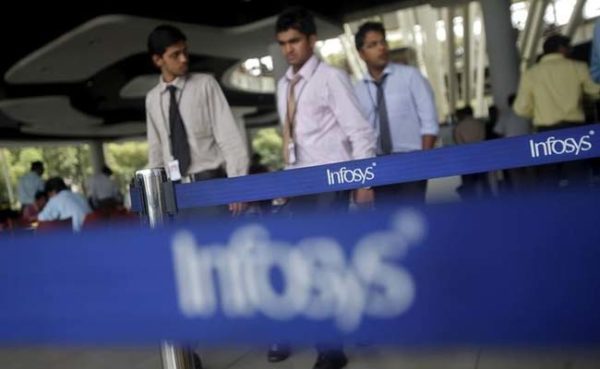Anticipating a more protectionist US technology visa programme under a Donald Trump administration, India’s $150 billion IT services sector will speed up acquisitions in the United States and recruit more heavily from college campuses there.
Companies including Tata Consultancy Services (TCS), Infosys and Wipro have long used H1-B skilled worker visas to fly computer engineers to the US, their largest overseas market, temporarily to service clients.
Staff from those three companies accounted for around 86,000 new H1-B workers in 2005-14. The US currently issues close to that number of H1-B visas each year.
US President-elect Donald Trump’s campaign rhetoric, and his pick for Attorney General of Senator Jeff Sessions, a long-time critic of the visa programme, have many expecting a tighter regime.
“The world over, there’s a lot of protectionism coming in and push back on immigration. Unfortunately, people are confusing immigration with a high-skilled temporary workforce, because we are really a temporary workforce,” said Pravin Rao, chief operating officer at Infosys, India’s second-largest information technology firm.
While few expect a complete shutdown of skilled worker visas as Indian engineers are an established part of the fabric of Silicon Valley, and US businesses depend on their cheaper IT and software solutions, any changes are likely to push up costs.
And a more restrictive programme would likely mean Indian IT firms sending fewer developers and engineers to the United States, and increasing campus recruitment there.
“We have to accelerate hiring of locals if they are available, and start recruiting freshers from universities there,” said Infosys’ Rao, noting a shift from the traditional model of recruiting mainly experienced people in the US
“Now we have to get into a model where we will recruit freshers, train them and gradually deploy them, and this will increase our costs,” he said, noting Infosys typically recruits 500-700 people each quarter in the US and Europe, around 80 percent of whom are locals.
ACQUISITIONS
Donald Trump’s election win and Britain’s referendum vote to leave the European Union are headwinds for India’s IT sector, as clients such as big U.S. and British banks and insurers hold off on spending while the dust settles.
In India’s IT hub of Bengaluru and the financial capital Mumbai, executives expect a Trump administration to raise the minimum wage for foreign workers, pressuring already squeezed margins.
Buying US companies would help Indian IT firms build their local headcount, increase their on-the-ground presence in key markets and help counter any protectionist regulations.
Indian software services companies have invested more than $2 billion in the United States in the past five years. North America accounts for more than half of the sector’s revenue.
“We have to accelerate acquisitions,” said Mr Rao at Infosys, which in the past two years has bought companies including US-based Noah Consulting and Kallidus Technologies.
Jatin Dalal, Wipro’s chief financial officer, said his growth strategy is to buy companies that offer something beyond what Wipro already does, or new, disruptive firms – such as Appirio, a US cloud services firm.
The chief executive of Tech Mahindra, CP Gurnani, said his firm, which two years ago bought network services management firm Lightbridge Communications Corp, is on the look-out for more US acquisitions, particularly in healthcare and fintech – financial technology firms that are disrupting traditional banking services.
OFFSHORING & AUTOMATION
In a broader shift from labour intensive onsite projects, Indian IT firms are also turning to higher-tech services such as automation, cloud computing and artificial intelligence (AI) platforms.
With better technology and faster networks, IT firms are encouraging Western clients to adopt more virtual services.
Infosys CEO Vishal Sikka says he has focused on automation and AI as growth drivers since 2014. “The AI platform is 5-6 percent of our revenues,” he told Reuters. “Three years ago, it was zero.”
More automation would mean fewer onshore developers.
“The ‘Plan B’ would be to accelerate the trend … to reduce their reliance on people and increase their focus on delivering automation, leveraging the cloud for their clients,” said Partha Iyengar, Gartner’s head of research in India.






Leave a reply